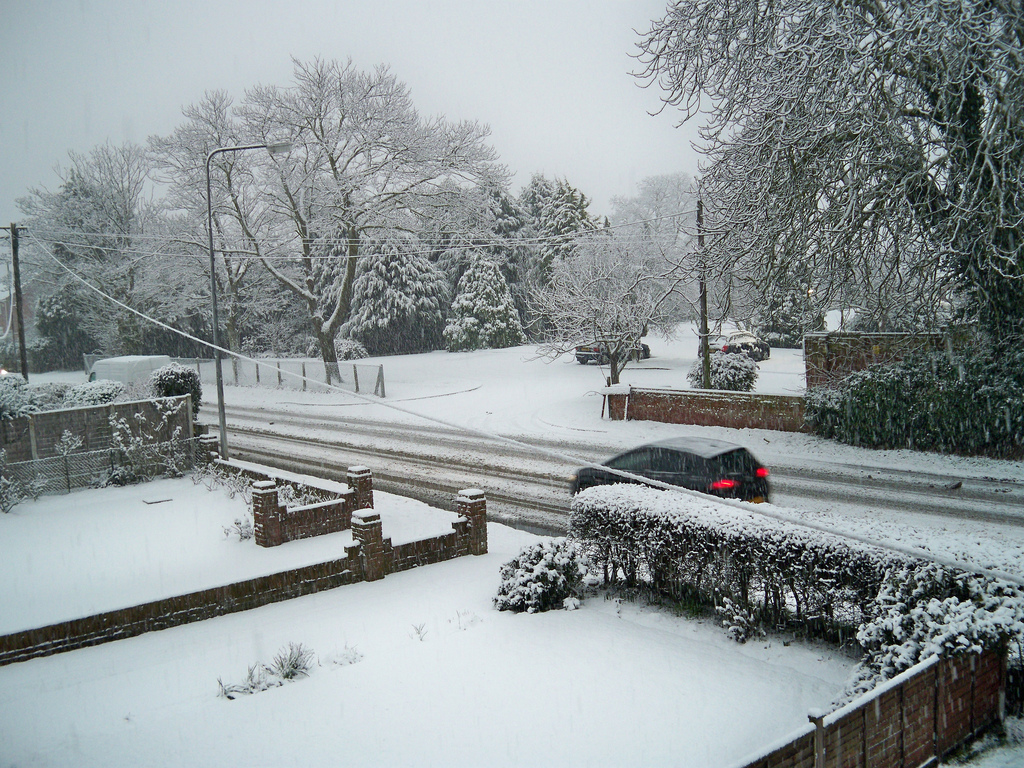During winter, roadways can become covered with ice or snow, presenting additional hazards. If it is not possible to stay home until roads are cleared, follow several tips to reduce the chance of an accident. If roads are regularly snow-covered, begin by equipping the car with snow tires. Experts recommend at least 6/32-inch of tread and while some all-season tires provide sufficient snow traction, others do not.
Practice braking to learn how to get the most from these controls in an emergency. With antilock brakes, stomp on the pedal, wait to feel the pulses of the antilock braking system, and ease up on the pedal slightly until pulsing occurs only one time per second. If the car does not have antilock brakes, push hard on the brake pedal until the wheels stop turning. Release the brake just enough to permit the wheels to turn and repeat this process in rapid frequency. This allows the tires to deliver maximum grip on ice or snow.
Black ice, or glare ice, is nearly transparent and may appear as a puddle or may not be seen. When skidding on it, apply the brake smoothly and turn the wheel slightly, if needed. To prevent icy road surprises in frequently traveled areas, make mental notes of where these conditions typically occur. Intersections and bridges are two common locations.
If the front tires lose their grip on a slick roadway, do not continue turning the wheel because this could worsen the situation. Once front tires regain their grip, the car will veer off in the direction in which wheels are pointed, which could be into a telephone pole, guardrail, or oncoming traffic. Also, do not rely on electronic stability control or all-wheel drive because neither will provide more traction.
Driving too fast is the most common mistake people make in winter conditions. If roads are slippery, a driving mistake will have faster, more dramatic results. Follow posted speed limits, traveling under the speed limit if the roadway is icy or snow-covered. Double the normal distance between the vehicle and the car in front of it, allowing four car lengths for every ten miles per hour of speed.
Keeping eyes on the road, looking ahead, and being prepared for corners allows you to anticipate problems. Apply brakes smoothly before reaching a corner, release brakes when at the corner, and accelerate out of the turn. Practice smooth use of vehicle controls, particularly steering, to arrive safely.
*Photo Courtesy of Ian Webb via Creative Commons License

